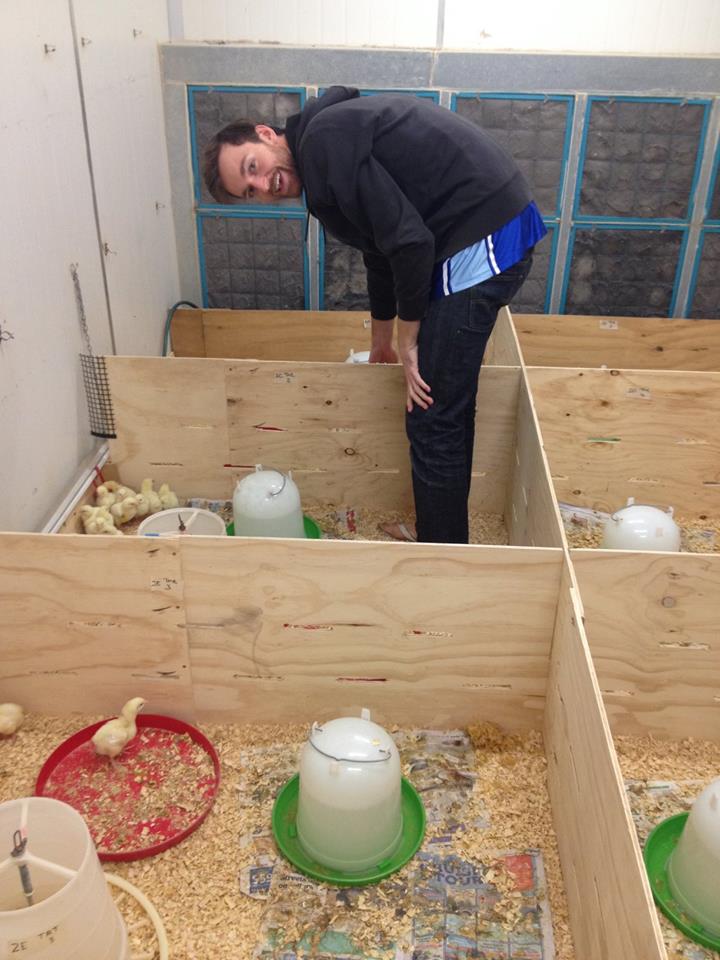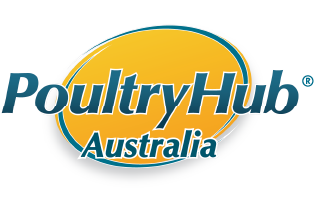Feed Restriction Effects on Broiler Muscle Growth is the title of Mr Dean Powell’s Poultry CRC-supported PhD project. His research examines the impact of varied nutritional regimens on muscle development, especially focussing on the immediate post-hatch period, with the overall aim of producing broiler birds with more muscle and less fat. Dean spent the first 18 months of his PhD at The Ohio State University (OSU) in the United States, to work alongside his supervisor and CRC Sub-Project leader, Professor Sandra Velleman.
The increase in demand for poultry products, in particular chicken, has led to producers seeking methods to maximize growth rates to increase their economic returns per carcass. One area targeted specifically for this is lean carcass development, especially in relation to the breast muscle (due to it being the most economically valuable part of the carcass in countries such as the United States).
Broadly, skeletal muscle development results from proliferation and differentiation of myoblasts that fuse to form multinucleated myotubes. Subsequently these differentiate into muscle fibres which then undergo no further cell division and can only be altered through hypertrophy. Post-hatch muscle hypertrophy, the subject of Dean’s work, occurs through the proliferation and differentiation of myogenic satellite cells into muscle myofibres, which then fuse with existing muscle myofibres to increase their size. This process is pivotal for adequate muscle mass accretion; however, due to the fact that satellite cells are partially differentiated stem cells, there are factors which can influence their differentiation causing them to form cell types other than skeletal muscle such as adipocytes (fat) as well as chondrocytes (cartilage; although this has only been shown in vitro).
The immediate post-hatch period is the time of maximal myogenic satellite cell activity, therefore optimizing growth conditions during this period is of great importance. It is currently common in commercial poultry operations for feed restriction during the first two-week posthatch period due to industry conventions to control metabolic disorders, such as those resulting in leg problems. Similarly, chicks are often made to rely on nutrients from the yolk immediately post-hatch during handling and transportation. These feeding practises during the critical time of maximal satellite cell activity could be having a large impact on muscle mass accretion. It has been shown that the nutritional status of the animal can cause satellite cells to follow alternative pathways of differentiation, leading to intramuscular fat deposition and breast muscle fibre necrosis (Velleman et al. 2010. Int. J. Poult. Sci.9:417-425). It is therefore critical that further understanding of the impact of varied nutritional regimens be addressed to ensure that economic implications from substandard muscle development are reduced.

“The timing of feed restriction definitely plays a major role in satellite cell activity” said Dean. “Sandy has completed several trials demonstrating that feed restriction in the first week of a chick’s life has lasting effects on both muscle fibre formation and intramuscular fat accumulation in broilers, which we are hoping to add to with my work”.
Dean continued, “Since it has been shown that the post-hatch period plays such a critical role for the satellite cells, my work has been focused on looking at the importance of the severity of a given feed restriction during this time. The work I undertook with Sandy in the U.S was specifically looking at the activity of satellite cells in a cell culture system under increasingly severe nutrient restriction. We observed a very significant decline in satellite cell activity as our restrictions became more stringent, which was reflected in their reduced myogenic marker gene expression. Interestingly, as the restriction became more severe adipogenic marker gene expression and lipid accumulation increased. As satellite cells are stem cells, we believe these results indicate that under the restrictive nutrient conditions the cells are transdifferentiating to form adipocytes (fat cells) instead of myofibres”.
“Our results so far indicate that there is potential for meat quality improvements through manipulation of satellite cell activity, and we are investigating this potential further. Since my work in the U.S was cell culture based I am now engaging in broiler trials to determine if our results were representative of satellite cell activity in vivo in commercial birds. These trials aim to determine to what degree the satellite cells can be targeted by feeding regimes to affect muscle quality and intramuscular fat deposition. Through this we hope to highlight the satellite cell as a worthwhile consideration in pre-starter feed formulation for the broiler chick” Dean concluded.
In addition to the substantial research he has undertaken, the opportunity to study, learn and travel abroad has been a highlight for Dean in his PhD studies. “I had a great time working and living in the U.S, and I’m thankful to both Sandy and the CRC for this” he said. “Both Sandy and her technician Cindy were great teachers and I learned a great deal about cell culture techniques and related assays. Cell culture can be quite frustrating at times when your cells decide to expire unexpectedly, or your culture becomes contaminated and you have to start again, but the end results and experience were definitely worth it”.
Dean has proved to be an exceptional student according to Professor Velleman. “Dean came into the lab having little experience of cell culture, PCR methods or the background knowledge required for this area of research” said Sandy. “He worked hard to learn the knowledge he needed and also learned how to examine the literature. He also unofficially took my graduate level class in Developmental Biology, so he could learn new areas of biology. In the year and a half Dean spent here, he has become very proficient in all areas associated with his project. His efforts have resulted in two peer-reviewed publications in (journal) Poultry Science, and another paper is submitted. For anyone, this is an outstanding level of achievement”.
Dean’s experience demonstrates that there is ample opportunity for talented young scientists such as himself in the poultry industry. “I’ve been asking myself a lot lately what future direction I’d like to take. I’ve really enjoyed working within the sphere of poultry production and would definitely like to continue within it. Five years from now, I’d just like to be putting my PhD to good use!” said Dean. His work with Sandy at OSU has the potential to produce pre-starter feed formulations that will aid industry, and his efforts will be rewarded with a bright future.


